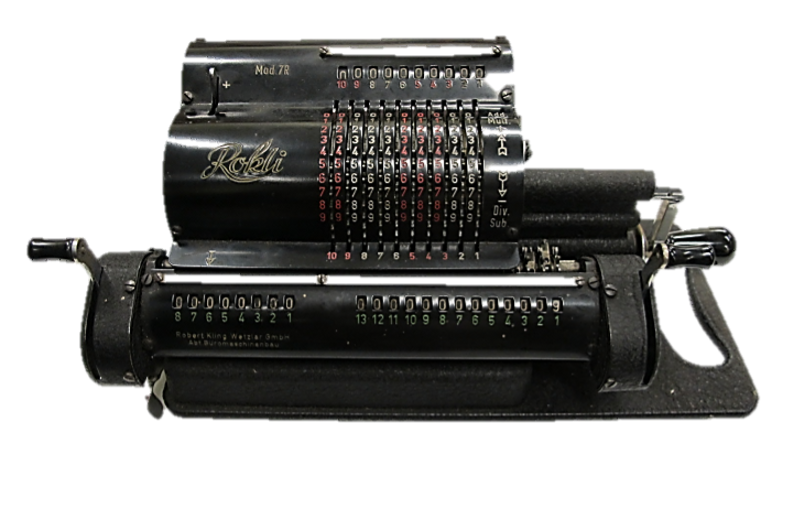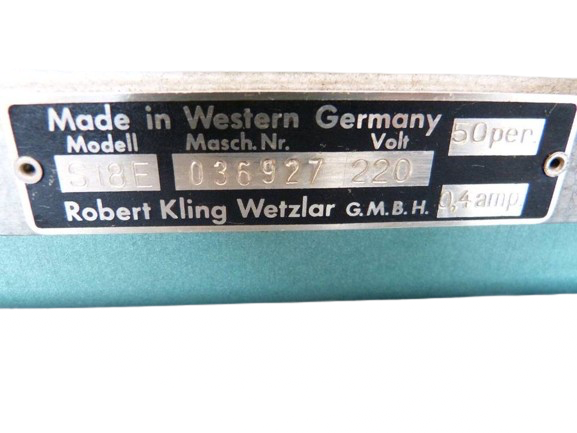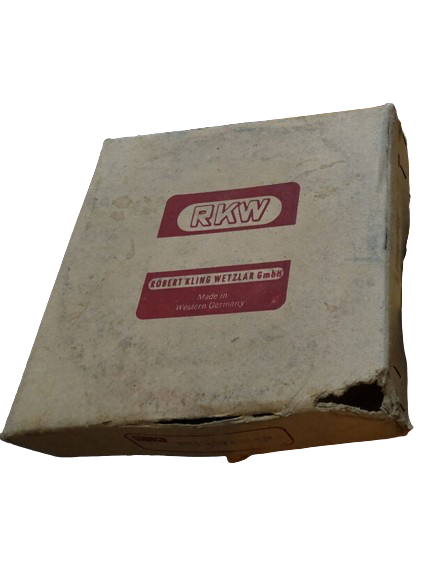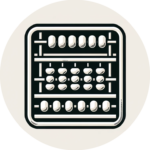ROKLI, 1949
Inventor
ODHNER principle
Invention date
Unknown
Manufacturing date:
1949-1958
Manufacturing location
Wetzlar (West Germany)
Manufacturer
Robert Kling (Kugellagerfabrik)
Dimensions
L32 H12 W14
Reference Number
YD

History and Functionality
Robert KING calculating machines were produced at his plant in Wetzlar (West Germany).
His first production was based on the Odhner machine and later on the plant produced more sophisticated machines that used electricity. He also built cash registers.
Production of ROKLI calculating machines began in 1949 and ended in 1958.
The operating mode is identical to that of the ORIGINAL ODHNER machine. One should note the presence of a handle for carrying the machine from one workstation to another.
At the same time in USSR, the KGB chief Felix Dserskinsky started production of equivalent machines under the name of FELIX.
About The Inventor
Robert Kling, the founder of Kugellagerfabrik, a renowned ball bearing factory in Wetzlar, West Germany, played a pivotal role in the history of mechanical calculators through the production of the “ROKLI” in 1949. Kling’s journey as an industrialist and his contributions to the field of mechanical computation offer a fascinating glimpse into the post-war era of innovation and manufacturing.
Robert Kling established Kugellagerfabrik in the early 20th century, a period marked by rapid industrial growth and technological advancement. Located in Wetzlar, a city known for its precision engineering and optics industries, Kling’s factory specialized in the production of high-quality ball bearings, a critical component in machinery and mechanical devices.
The end of World War II brought significant changes to the German industrial landscape. Amidst the reconstruction of the country, there was a growing demand for business and scientific equipment, including calculating machines. Recognizing this opportunity, Robert Kling ventured into the realm of mechanical calculators, a move that would mark a significant chapter in his career and the history of computational devices.
In 1949, under Kling’s visionary leadership, Kugellagerfabrik began the production of the “ROKLI” (an abbreviation of “Robert Kling”), a mechanical calculator designed to meet the needs of a modernizing world. The ROKLI stood out for its precision engineering, a testament to Kling’s expertise in creating high-quality mechanical components. This precision was a direct result of Kling’s background in ball bearing manufacturing, where accuracy and reliability were paramount.
The ROKLI calculators were noted for their robust construction, ease of use, and accuracy, making them popular among businesses, educational institutions, and professionals. Kling’s foray into calculator manufacturing showcased his ability to adapt and innovate, applying his manufacturing skills to a new and challenging domain.
Robert Kling’s contribution to the field of mechanical calculators went beyond the production of the ROKLI. His decision to diversify into calculator manufacturing demonstrated a keen understanding of market needs and a willingness to embrace new technologies. This adaptability was a hallmark of post-war German industry, characterized by a blend of traditional craftsmanship and modern innovation.
Throughout his career, Kling remained committed to quality and precision, values that were deeply ingrained in the manufacturing ethos of Kugellagerfabrik.


